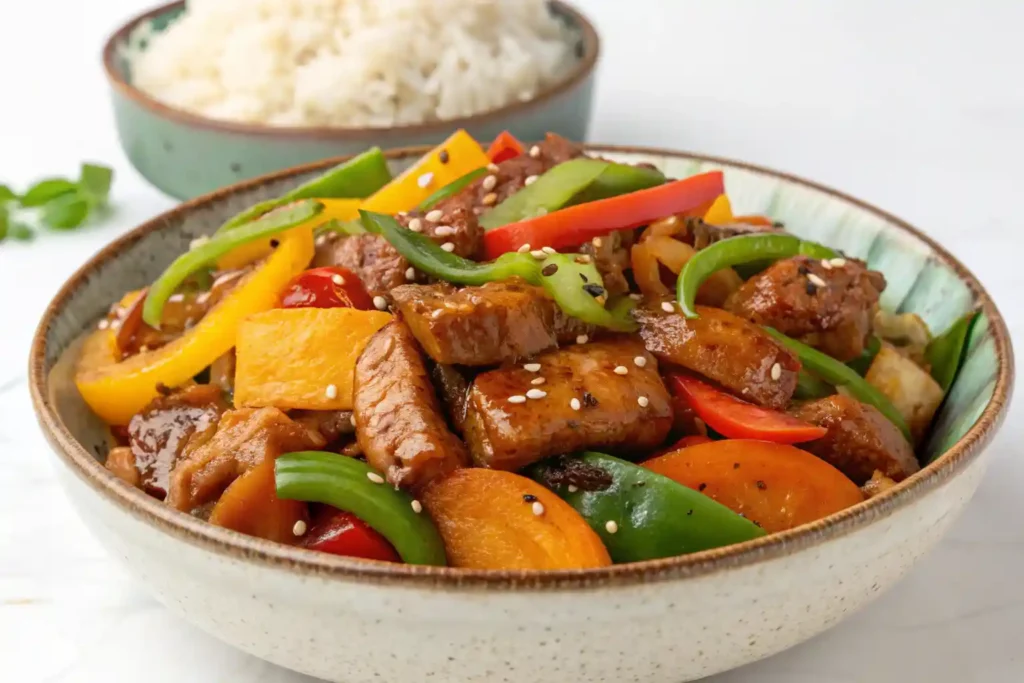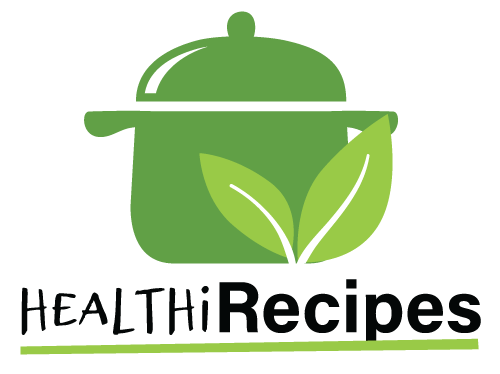Guava paste is a delightful treat that brings a taste of tropical sweetness to your kitchen. In this article, we’ll explore everything you need to know about guava paste, from its origins and nutritional benefits to how you can make it at home. We’ll also dive into creative ways to use guava paste in your cooking and baking, and clarify some common questions about this delicious ingredient. So, whether you’re a seasoned chef or a curious foodie, you’re in for a treat!
Table of contents
1: What is Guava Paste?
Definition of Guava Paste
So, what exactly is guava paste? Well, it’s a thick, sweet spread made from the pulp of ripe guavas. This tropical fruit, known for its vibrant flavor and aroma, is transformed into a paste that’s both versatile and delicious. Typically, guava has a rich, deep color, ranging from light pink to dark red, depending on the variety of guava used. It’s often enjoyed in various cuisines, especially in Latin American and Caribbean dishes.
History and Origin of Guava Paste
The history of guava paste is as rich as its flavor. Originating in tropical regions, guavas have been cultivated for centuries. The practice of making guava likely began as a way to preserve the fruit, allowing people to enjoy its sweet taste long after the harvest season. In many cultures, guava is a staple ingredient, often paired with cheese or used in desserts. It’s not just a treat; it’s a part of culinary traditions that celebrate the unique flavors of tropical fruits.
2: Nutritional Benefits of Guava Paste
Vitamins and Minerals in Guava Paste
When it comes to guava paste, it’s not just about the sweet taste; it’s also packed with nutrients! Guava is rich in vitamins A and C, which are essential for maintaining healthy skin and boosting your immune system. Additionally, it contains important minerals like potassium and magnesium, which help regulate blood pressure and support muscle function.
Moreover, guava paste is a good source of dietary fiber. This means it can aid digestion and help keep you feeling full longer. So, if you’re looking for a tasty way to add some nutrition to your diet, guava paste is a fantastic option!
Health Benefits of Consuming Guava
Incorporating guava paste into your diet can offer several health benefits. For starters, the antioxidants found in guava can help combat free radicals in your body, potentially reducing the risk of chronic diseases. Plus, the high vitamin C content can enhance your immune response, making it easier for your body to fight off infections.
Additionally, the fiber in guava paste can promote digestive health. It helps maintain regular bowel movements and can prevent constipation. So, not only is guava delicious, but it also supports your overall well-being.
In summary, guava paste is more than just a sweet treat; it’s a nutritious addition to your meals. With its rich vitamin content and health benefits, it’s a great way to enjoy the goodness of guavas in a convenient form. Now, let’s move on to how you can make your very own guava paste at home!
3: How to Make Guava Paste at Home
Ingredients Needed for Guava Paste
Making guava paste at home is easier than you might think! Here’s what you’ll need:
- Ripe guavas: About 2 pounds (make sure they’re soft and fragrant)
- Sugar: 1 to 1.5 cups, depending on your sweetness preference
- Lemon juice: 2 tablespoons (this helps with preservation and adds flavor)
- Water: 1 cup (for cooking)
These simple ingredients come together to create a delicious paste that you can use in various recipes or enjoy on its own.
Step-by-Step Instructions for Making Guava
- Prepare the Guavas: Start by washing the guavas thoroughly. Cut them in half and scoop out the pulp, discarding the seeds. You can also leave the skin on for added flavor and nutrients.
- Cook the Guava Pulp: In a medium saucepan, combine the guava pulp and water. Cook over medium heat, stirring occasionally, until the pulp becomes soft and mushy. This should take about 15-20 minutes.
- Blend the Mixture: Once the guava pulp is cooked, use a blender or food processor to puree it until smooth. If you prefer a chunkier texture, you can skip this step.
- Add Sugar and Lemon Juice: Return the pureed guava to the saucepan. Add the sugar and lemon juice, stirring well to combine. Cook the mixture over low heat, stirring frequently, until it thickens. This can take anywhere from 30 to 45 minutes.
- Test the Consistency: To check if your guava is ready, drop a small amount onto a plate. If it holds its shape and doesn’t run, it’s done! If it’s still too runny, continue cooking for a few more minutes.
- Cool and Store: Once thickened, pour the guava pasta into a greased dish or mold. Allow it to cool completely at room temperature. Once cooled, you can cut it into squares or store it in an airtight container in the fridge.
Tips for Perfecting Your guava pasta
To make the best guava paste, here are a few tips:
- Choose Ripe Guavas: The riper the guavas, the sweeter your paste will be. Look for guavas that are soft to the touch and have a strong aroma.
- Adjust Sweetness: Feel free to adjust the amount of sugar based on your taste. You can also experiment with natural sweeteners like honey or agave syrup.
- Storage: guava pastacan be stored in the refrigerator for up to a month. You can also freeze it for longer storage. Just make sure to wrap it tightly to prevent freezer burn.
4: Creative Ways to Use guava pasta

Guava Paste in Desserts
One of the best things about guava paste is its versatility, especially in desserts! You can use it in various sweet treats to add a tropical twist. For instance, try spreading guava paste on a slice of cheesecake or mixing it into your favorite yogurt for a refreshing snack. It also works wonderfully in pastries. Just roll out some puff pastry, spread a layer of guava paste, and bake until golden brown. You’ll have a delightful treat that’s sure to impress!
Another fantastic dessert idea is to use guava in tarts. Simply line a tart shell with the paste and top it with fresh fruits like strawberries or kiwi. The combination of flavors is simply divine! You can also incorporate guava paste into ice cream or sorbet for a unique flavor that will transport you to a tropical paradise.
Savory Dishes Featuring Guava Paste
While guava paste is often associated with sweet dishes, it can also shine in savory recipes. For example, you can use it as a glaze for meats like chicken or pork. Just mix guava paste with some soy sauce, garlic, and ginger for a delicious marinade. The sweetness of the paste balances beautifully with the savory flavors, creating a mouthwatering dish.

Additionally, guava paste can be paired with cheese for a delightful appetizer. Serve it alongside a cheese platter with crackers and fresh fruits. The sweet and tangy flavor of guava paste complements a variety of cheeses, especially creamy ones like brie or goat cheese.
If you’re feeling adventurous, try adding guava pasta to your stir-fries or sauces. It can add a unique depth of flavor that elevates your dish. The possibilities are endless when it comes to using guava paste in your cooking!
For more delicious recipes, check out our recipe article on Healthi Recipes.
5: Guava Pasta vs. Guava Jelly: What’s the Difference?
Texture and Flavor Differences
When it comes to guava pasta and guava jelly, many people often wonder about the differences. While both are made from guavas, their textures and flavors set them apart. Guava paste is thick and dense, with a rich, concentrated flavor that comes from cooking down the fruit. It has a chewy texture that makes it perfect for spreading or using in recipes.
On the other hand, guava jelly is much smoother and has a more gelatinous consistency. It’s made by extracting the juice from the guava and then combining it with sugar and pectin to create that classic jelly texture. The flavor of guava jelly is typically sweeter and less intense than that of guava paste, making it a great option for spreading on toast or using in desserts.
Uses in Cooking and Baking
When it comes to cooking and baking, both guava paste and guava jelly have their unique uses. Guava is often used in savory dishes, desserts, and as a filling for pastries, while guava jelly is commonly used as a spread or in sweet recipes. For instance, you might find guava jelly in breakfast dishes, like pancakes or waffles, while guava shines in tarts and glazes.
6: FAQs About Guava Pasta
What is Guava Used For?
Guava pastaoffers incredible versatility and shines in many dishes! People love spreading it on toast or crackers and pairing it with cheese for a delightful appetizer. You can also incorporate it into desserts like tarts, cakes, and pastries, where it adds a sweet, tropical flavor. Additionally, use guava paste in savory dishes, such as glazes for meats or in stir-fries, where its sweetness beautifully balances savory ingredients.
Can you eat guava pasta by itself?
Absolutely! Many people enjoy eating guava paste straight from the jar. Its rich, sweet flavor makes it a tasty treat on its own. You can slice it into cubes and serve it as a snack or dessert. It’s also great when paired with cheese or fresh fruits, making it a perfect addition to a cheese platter.
Is guava pasta the same as guava jelly?
While both guava and guava jelly are made from guavas, they are not the same. Guava is thick and dense, made from the fruit pulp, while guava jelly is smooth and gelatinous, made from the juice of the fruit. The flavor of guava is more intense and concentrated, whereas guava jelly tends to be sweeter and lighter. Each has its unique uses in cooking and baking, so it’s good to know which one to use for your recipes.
What are the side effects of guava?
Generally, guava paste is safe to eat for most people. However, consuming it in large amounts may lead to digestive issues due to its high fiber content. Some individuals may also be sensitive to the natural sugars in guava, which could cause discomfort. As with any food, moderation is key. If you have specific dietary concerns, it’s always best to consult with a healthcare professional.
In conclusion, guava paste is a delightful and versatile ingredient that can elevate your cooking and baking. From its rich history and nutritional benefits to the many ways you can use it, guava is a must-try for any food lover. Whether you enjoy it in sweet desserts, savory dishes, or simply on its own, this tropical treat is sure to please your palate. So, why not give it a try? You might just discover a new favorite ingredient that adds a burst of flavor to your meals! Enjoy your culinary adventures with guava paste!
For more delicious recipes, check out our article on Healthy Enchiladas: Guilt-Free.

